AMD Ryzen 9 5980HS Cezanne Review: Ryzen 5000 Mobile Tested
by Dr. Ian Cutress on January 26, 2021 9:00 AM EST- Posted in
- CPUs
- AMD
- Vega
- Ryzen
- Zen 3
- Renoir
- Notebook
- Ryzen 9 5980HS
- Ryzen 5000 Mobile
- Cezanne
CPU Tests: Rendering
Rendering tests, compared to others, are often a little more simple to digest and automate. All the tests put out some sort of score or time, usually in an obtainable way that makes it fairly easy to extract. These tests are some of the most strenuous in our list, due to the highly threaded nature of rendering and ray-tracing, and can draw a lot of power. If a system is not properly configured to deal with the thermal requirements of the processor, the rendering benchmarks is where it would show most easily as the frequency drops over a sustained period of time. Most benchmarks in this case are re-run several times, and the key to this is having an appropriate idle/wait time between benchmarks to allow for temperatures to normalize from the last test.
Blender 2.83 LTS: Link
One of the popular tools for rendering is Blender, with it being a public open source project that anyone in the animation industry can get involved in. This extends to conferences, use in films and VR, with a dedicated Blender Institute, and everything you might expect from a professional software package (except perhaps a professional grade support package). With it being open-source, studios can customize it in as many ways as they need to get the results they require. It ends up being a big optimization target for both Intel and AMD in this regard.
For benchmarking purposes, we fell back to one rendering a frame from a detailed project. Most reviews, as we have done in the past, focus on one of the classic Blender renders, known as BMW_27. It can take anywhere from a few minutes to almost an hour on a regular system. However now that Blender has moved onto a Long Term Support model (LTS) with the latest 2.83 release, we decided to go for something different.
We use this scene, called PartyTug at 6AM by Ian Hubert, which is the official image of Blender 2.83. It is 44.3 MB in size, and uses some of the more modern compute properties of Blender. As it is more complex than the BMW scene, but uses different aspects of the compute model, time to process is roughly similar to before. We loop the scene for at least 10 minutes, taking the average time of the completions taken. Blender offers a command-line tool for batch commands, and we redirect the output into a text file.

Intel loses out here due to core count, but AMD shows a small but not inconsequential uplift in performance generation-on-generation.
Corona 1.3: Link
Corona is billed as a popular high-performance photorealistic rendering engine for 3ds Max, with development for Cinema 4D support as well. In order to promote the software, the developers produced a downloadable benchmark on the 1.3 version of the software, with a ray-traced scene involving a military vehicle and a lot of foliage. The software does multiple passes, calculating the scene, geometry, preconditioning and rendering, with performance measured in the time to finish the benchmark (the official metric used on their website) or in rays per second (the metric we use to offer a more linear scale).
The standard benchmark provided by Corona is interface driven: the scene is calculated and displayed in front of the user, with the ability to upload the result to their online database. We got in contact with the developers, who provided us with a non-interface version that allowed for command-line entry and retrieval of the results very easily. We loop around the benchmark five times, waiting 60 seconds between each, and taking an overall average. The time to run this benchmark can be around 10 minutes on a Core i9, up to over an hour on a quad-core 2014 AMD processor or dual-core Pentium.
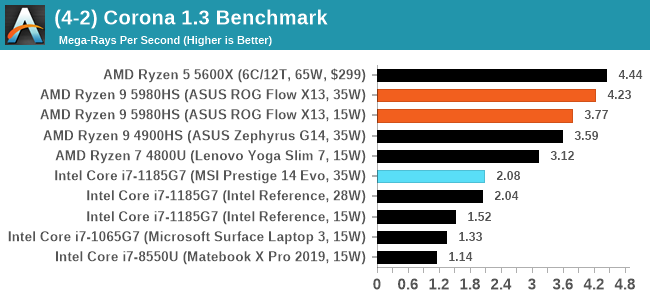
Corona shows a big uplift for Cezanne compared to Renoir.
Crysis CPU-Only Gameplay
One of the most oft used memes in computer gaming is ‘Can It Run Crysis?’. The original 2007 game, built in the Crytek engine by Crytek, was heralded as a computationally complex title for the hardware at the time and several years after, suggesting that a user needed graphics hardware from the future in order to run it. Fast forward over a decade, and the game runs fairly easily on modern GPUs.
But can we also apply the same concept to pure CPU rendering? Can a CPU, on its own, render Crysis? Since 64 core processors entered the market, one can dream. So we built a benchmark to see whether the hardware can.
For this test, we’re running Crysis’ own GPU benchmark, but in CPU render mode.

At these resolutions we're seeing a small uplift for Cezanne. We spotted a performance issue when running our 320x200 test where Cezanne scores relatively low (20 FPS vs Renoir at 30 FPS), and so we're investigating that performance issue.
POV-Ray 3.7.1: Link
A long time benchmark staple, POV-Ray is another rendering program that is well known to load up every single thread in a system, regardless of cache and memory levels. After a long period of POV-Ray 3.7 being the latest official release, when AMD launched Ryzen the POV-Ray codebase suddenly saw a range of activity from both AMD and Intel, knowing that the software (with the built-in benchmark) would be an optimization tool for the hardware.
We had to stick a flag in the sand when it came to selecting the version that was fair to both AMD and Intel, and still relevant to end-users. Version 3.7.1 fixes a significant bug in the early 2017 code that was advised against in both Intel and AMD manuals regarding to write-after-read, leading to a nice performance boost.
The benchmark can take over 20 minutes on a slow system with few cores, or around a minute or two on a fast system, or seconds with a dual high-core count EPYC. Because POV-Ray draws a large amount of power and current, it is important to make sure the cooling is sufficient here and the system stays in its high-power state. Using a motherboard with a poor power-delivery and low airflow could create an issue that won’t be obvious in some CPU positioning if the power limit only causes a 100 MHz drop as it changes P-states.
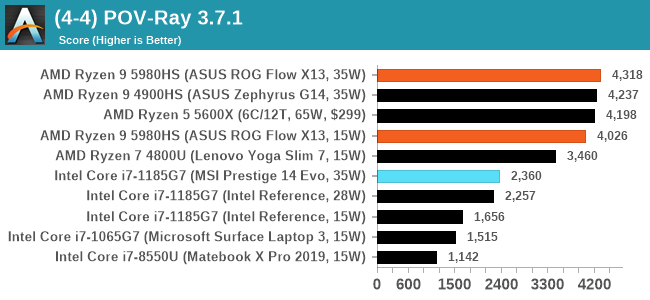
V-Ray: Link
We have a couple of renderers and ray tracers in our suite already, however V-Ray’s benchmark came through for a requested benchmark enough for us to roll it into our suite. Built by ChaosGroup, V-Ray is a 3D rendering package compatible with a number of popular commercial imaging applications, such as 3ds Max, Maya, Undreal, Cinema 4D, and Blender.
We run the standard standalone benchmark application, but in an automated fashion to pull out the result in the form of kilosamples/second. We run the test six times and take an average of the valid results.
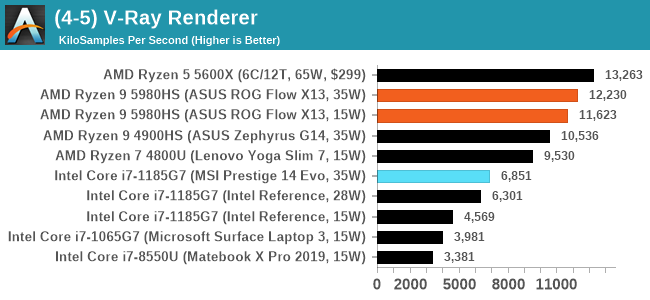
Another good bump in performance here for Cezanne.
Cinebench R20: Link
Another common stable of a benchmark suite is Cinebench. Based on Cinema4D, Cinebench is a purpose built benchmark machine that renders a scene with both single and multi-threaded options. The scene is identical in both cases. The R20 version means that it targets Cinema 4D R20, a slightly older version of the software which is currently on version R21. Cinebench R20 was launched given that the R15 version had been out a long time, and despite the difference between the benchmark and the latest version of the software on which it is based, Cinebench results are often quoted a lot in marketing materials.
Results for Cinebench R20 are not comparable to R15 or older, because both the scene being used is different, but also the updates in the code bath. The results are output as a score from the software, which is directly proportional to the time taken. Using the benchmark flags for single CPU and multi-CPU workloads, we run the software from the command line which opens the test, runs it, and dumps the result into the console which is redirected to a text file. The test is repeated for a minimum of 10 minutes for both ST and MT, and then the runs averaged.

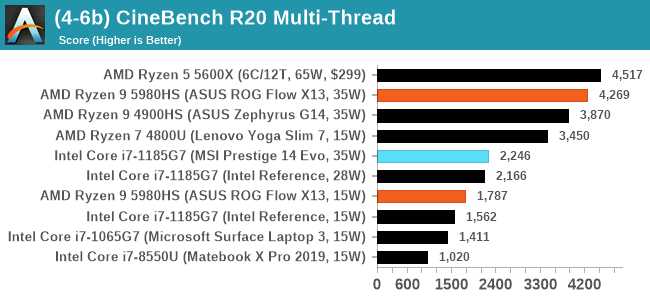
We didn't quite hit AMD's promoted performance of 600 pts here in single thread, and Intel's Tiger Lake is not far behind. In fact, our MSI Prestige 14 Evo, despite being listed as a 35W sustained processor, doesn't seem to hit the same single-core power levels that our reference design did, and as a result Intel's reference design is actually beating both MSI and ASUS in single thread. This disappears in multi-thread, but it's important to note that different laptops will have different single core power modes.



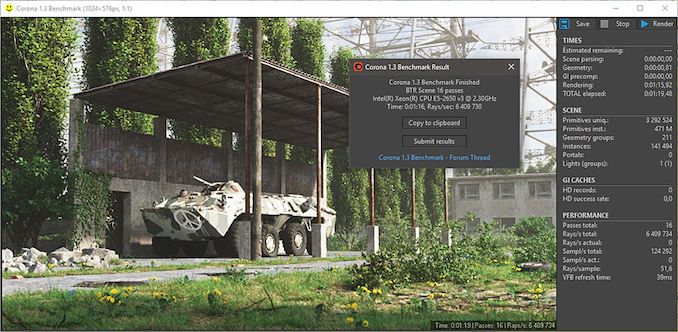
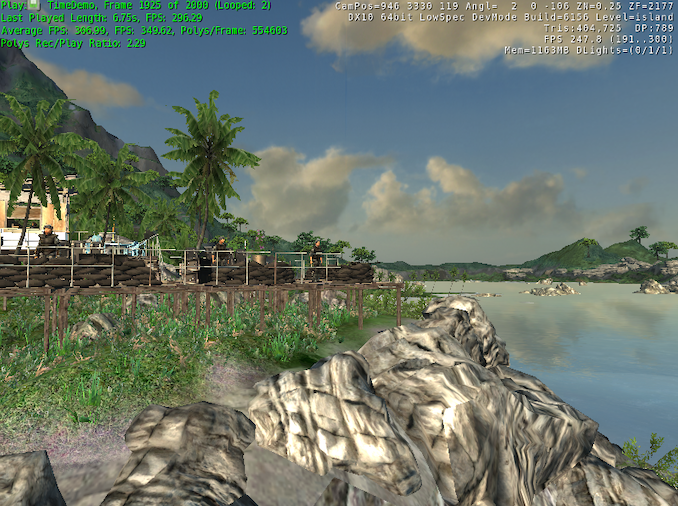











218 Comments
View All Comments
ToTTenTranz - Tuesday, January 26, 2021 - link
Is there any mention to the number and speed of PCIe lanes on Cezanne?I've been seeing reports of it only having x8 PCIe 3.0 lanes, which could present a problem to AMD's apparent goal of pairing Cezanne with discrete GPUs.
Also, I've read the explanation for the super weird resolutions chosen for the IGP tests, but it still comes off as rather irrelevant.
The author first claims the IGP is good for eSports, but then there are no eSports games being tested.
eSports is also apparently the reason the author is trying to pull >60FPS out of these SoCs, but I don't see a single title that anyone would want to play at those framerates.
The memory bandwidth limitation is also presented as a fact to be aware of, but then the author chooses very low render resolutions that are less likely to be impacted by memory bandwidth.
The Vega 8 at 2100MHz has a fillrate between the Xbox One and the PS4, a compute performance well above the PS4 and with LPDDR4X it has a memory bandwidth similar to that of the XBox One (without eDRAM).
IMO it would be a much more interesting procedure to test 8th-gen multiplatform games at resolutions and settings similar to the 8th-gen consoles, than trying to push Borderlands 3 to run at 90FPS at a 360p resolution that no one is ever going to enable.
The only useful result I see in there is FFXV at 720p medium.
Makaveli - Tuesday, January 26, 2021 - link
Why is apple silicon the "true challenge"I've already invested into the X86 eco system and all my software is there, why would I even consider an M1 regardless or performance?
And the same could be said for someone invested in the apple eco why would they even look at an x86 product?
pSupaNova - Tuesday, January 26, 2021 - link
Because a laptop that can run for hours/days with light use, is performant, does not need a fan is going to fly of the shelves.Watch Apple's market share explode as x86 users switch.
Ptosio - Tuesday, January 26, 2021 - link
I'm quite sure there'd be plenty Zen 3 designs that can run fanless for 10h+ with performance enough for 90% of users on the web/streaming/office etc. And that's before gets access to TSMC 5nm.For typical user invested in Windows/x86 software, there's still no compelling reason to switch to Apple silicon. Plus, at the price MacBooks go, you can get features unheard of in the Apple world, such as 4k OLED, touchscreen with stylus, 360 design, upgradable memory (affordable 32GB RAM and 4TB storage for less than Apple would charge for 8/1), discrete GPU with vast games' catalogue...
Not to take away from M1 superiority, but x86 is still simply good enough and would only get better.
Meteor2 - Thursday, February 4, 2021 - link
A typical user invested in x86 isn't going to change to Apple, no, but they're not the typical user. THE typical user is a lot more software-agnostic, and yes, ARM Apple is going to take marketshare. It's inevitable.Speedfriend - Wednesday, January 27, 2021 - link
Apple market share explode? That is hilarious. The average cost of a laptop sold last year was $400. Remind me what the cheapest Mac costs? Most purchasers have no idea about relative performance which is why they are still buying laptop with 8th generation Intel inside. Even battery life has little impact when x86 laptop claim to have up to 15 hours.Where Mac will take some share back is in professional designers where they had lost share over the past 5 years. But even then, the lack of multi monitor support may hamper that.
Deicidium369 - Wednesday, January 27, 2021 - link
Apple Market will expand slightly - but not from people moving from PC to Mac. People using a Mac by choice will continue to buy and use AppleThe hoops you need to jump thru for a 2nd monitor is kinda ridiculous - move designed to sell TB docking stations
Deicidium369 - Wednesday, January 27, 2021 - link
I get 12 or 13 hours from my Tiger Lake XPS13 - which is about 10 hours longer than I need...DigitalFreak - Tuesday, January 26, 2021 - link
IIRC, all their current mobile CPUs that support external graphics have 8 PCIe 3.0 lanes. That's more than enough for any dedicated GPU in a laptop right now.ToTTenTranz - Tuesday, January 26, 2021 - link
All current external GPUs have an immense bottleneck due to Thunderbolt 3.0 only using 4 PCIe 3.0 lanes.I don't know if Asus' 8x solution is enough, either.